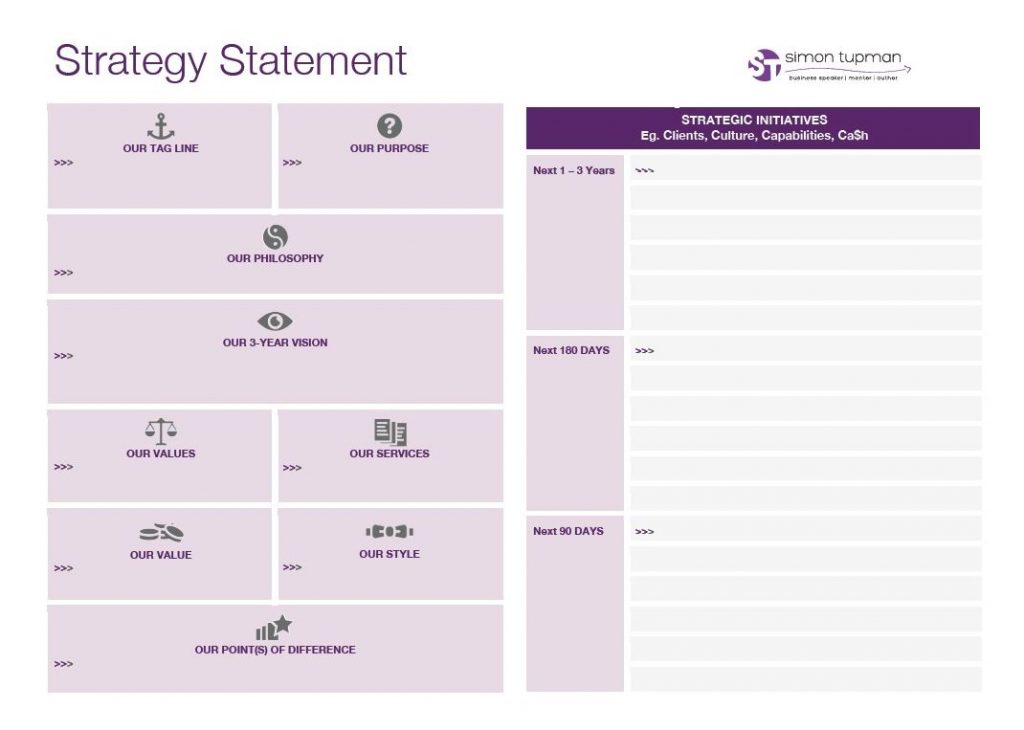Mention the words ‘strategy’ or ‘planning’ to many business leaders and managers and their eyes tend to glaze over. Many I speak to profess their organisation or firm has ‘done it’ but on closer inspection, in reality, they have not, or at least, not that effectively. For many, setting business goals is akin to making New Year’s resolutions, – aspirational but with (some) goals rarely achieved. Often this can be due to a lack of consensus or commitment within an organisation, especially at the top. However, this can also be as a result of the organisation failing to define its business first.
By ‘define its business’, I mean gain clarity around some key drivers of the business; for example:
Often, finding consensus to these questions can be hard and can result in semantics and verbosity. It need not be this way. Recently, I refined a one-page strategy statement (see below) that I have used with some clients who report that the the process has some real benefits:
As a rule of thumb, your strategy statement should be BRIEF, literally.
B = believable (by the team)
R = realistic
I = inspiring (to the team)
E = easy to understand
F = focused
Once you have defined your business, you will find it is easier to manage, to make decisions, and to attract the right people.

This article was first published on Simon Tupman‘s website and can be read by clicking here.